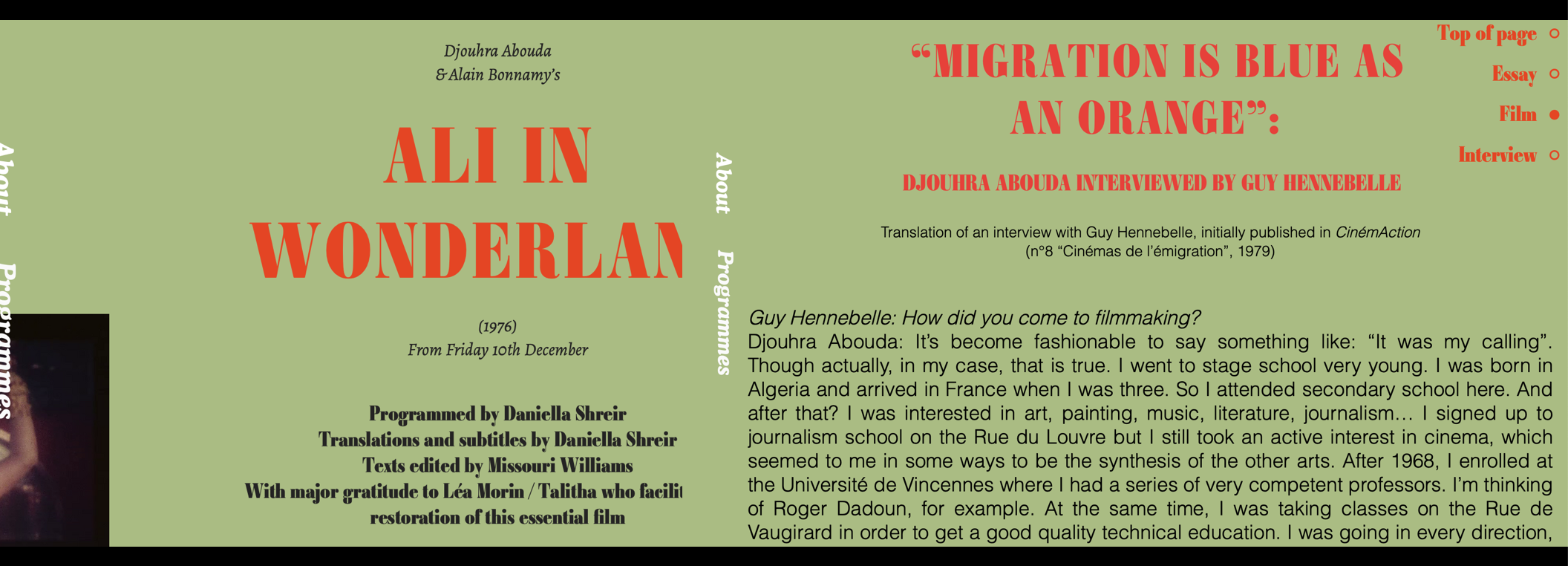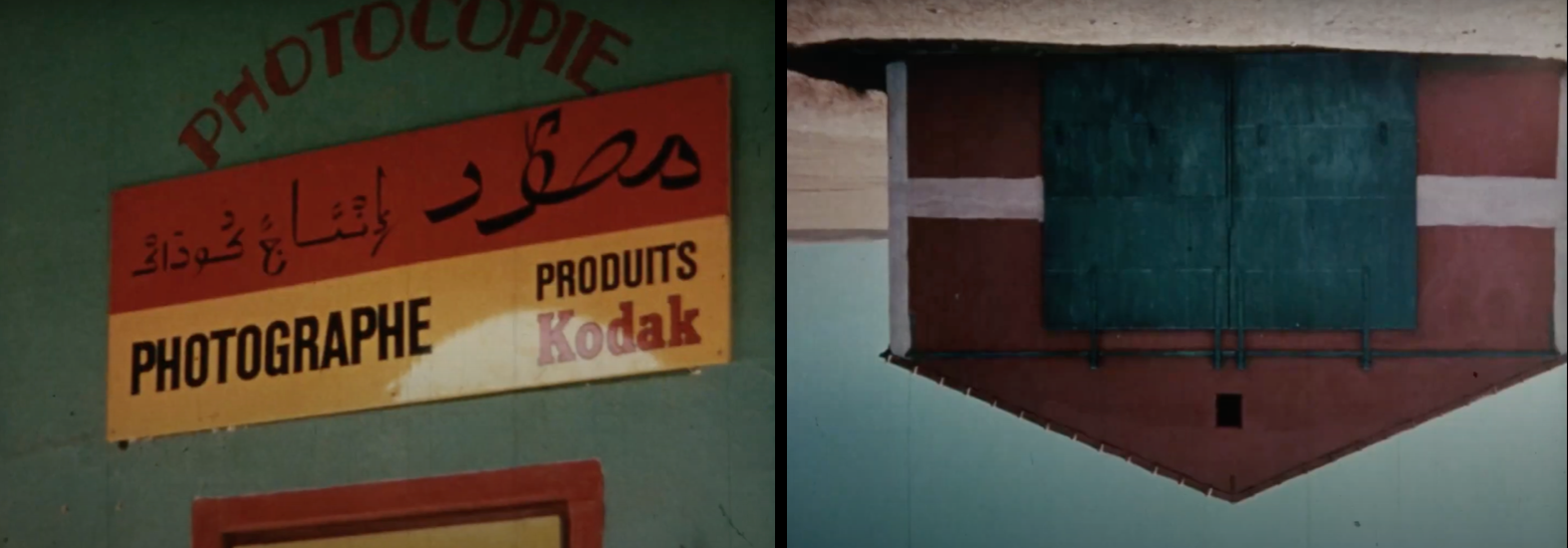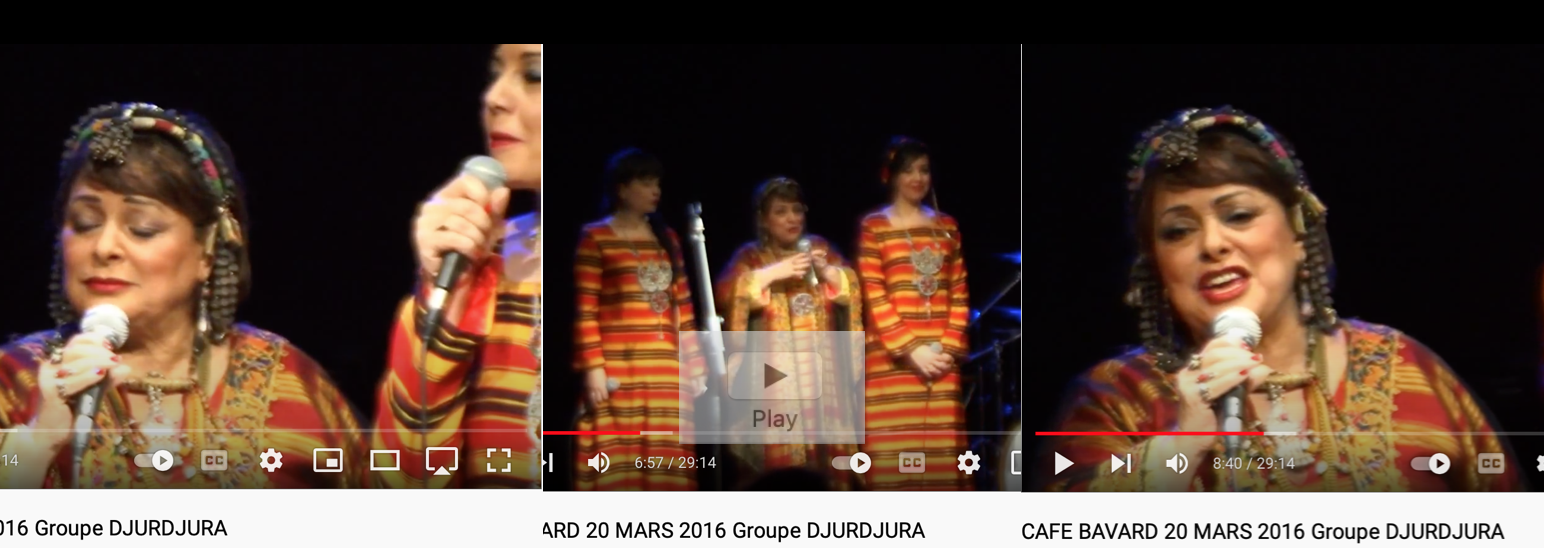Djouhra Abouda & Alain Bonnamy
Going by the name of Djurjura, Djouhra Abouda started a musical career combining women’s voices with Kabyle cultural claims in the early 1970s. She began working as a filmmaker with Algérie couleurs (1970-1972) and Cinécité (1973-1974), both kaleidoscopic collages co-directed with Alain Bonnamy within the experimental film lab of Vincennes University. (cccb.org)
Born in Algeria in 1949, Djouhra Abouda arrived in France with her family in 1956. She founded the feminist protest band Djurdjura in the late 1970s and began to pursue a solo music career in 2002. Alain Bonnamy, born in 1947, is an architect and photographer. (trylon.org)

Djohra Abouda appears in Claudine Eizykman’s (1972–1974) V W Vitesse Women, one of the most important films of the Vincennes group.
From Another Screen
Shaky and stirring, Ali au pays des Merveilles shows an increasingly devastating conflict between the actions of workers and those of the society that employs them without ever seeing or considering them. Luxury shops and boutiques selling haute couture contrast brutally with the living conditions and work undertaken by the Algerians. Images of narrow walkways between tower blocks, slums, substandard apartments, respond figuratively to society’s repressive order of police violence and racism, as well as France’s colonial legacy (the filmmakers include archival images of the Algerian War of Independence, the Sétif massacre, and photographs taken by journalist Élie Kagan on the night of the Paris Massacre of 1961). Abouda and Bonnamy make use of the full audio-visual arsenal of experimental cinema at the time: superimposition and flicker; mosaic images and split screen; fast and slow motion; the integration of still images and animation; jump cuts and shots where the cut is almost imperceptible; and glitching and distortion, either done in-camera or in the edit. (Federico Rossin, Ciné Cri)
How did this searing and modern piece of work come to be, and why did it remain semi-invisible for so long? At the time the film was made, Djouhra Abouda (who arrived in France aged three) and Alain Bonnamy were both students in the Department of Cinematographic and Audiovisual Studies at the Université Paris VIII–Vincennes where, from 1970 onwards, Guy Fihman and Claudine Eizykman – both of whom had been part of Jean-François Lyotard’s seminar in Nanterre – set up workshops for experimental filmmaking. (Federico Rossin, Ciné Cri)
Cinécité (1973-1974)
A short film devoted to the streets of Paris. The filmmakers capture the cosmopolitan city in a series of kaleidoscopic assemblages accompanied by the sounds of saxophone and Um Kalthoum. (trylon.org)
Algérie couleurs (1970-1972)
A short cinematographic exploration of color in Algerian architecture made using a rostrum camera with photographs taken by Alain Bonnamy and accompanied by music. Recently digitized in 4K at Polygône Etoilé Marseille. (trylon.org)
Djurdjura - Igwerdan ad ddun yidi (live 1982)
CAFE BAVARD, March 2016, Groupe DJURDJURA





